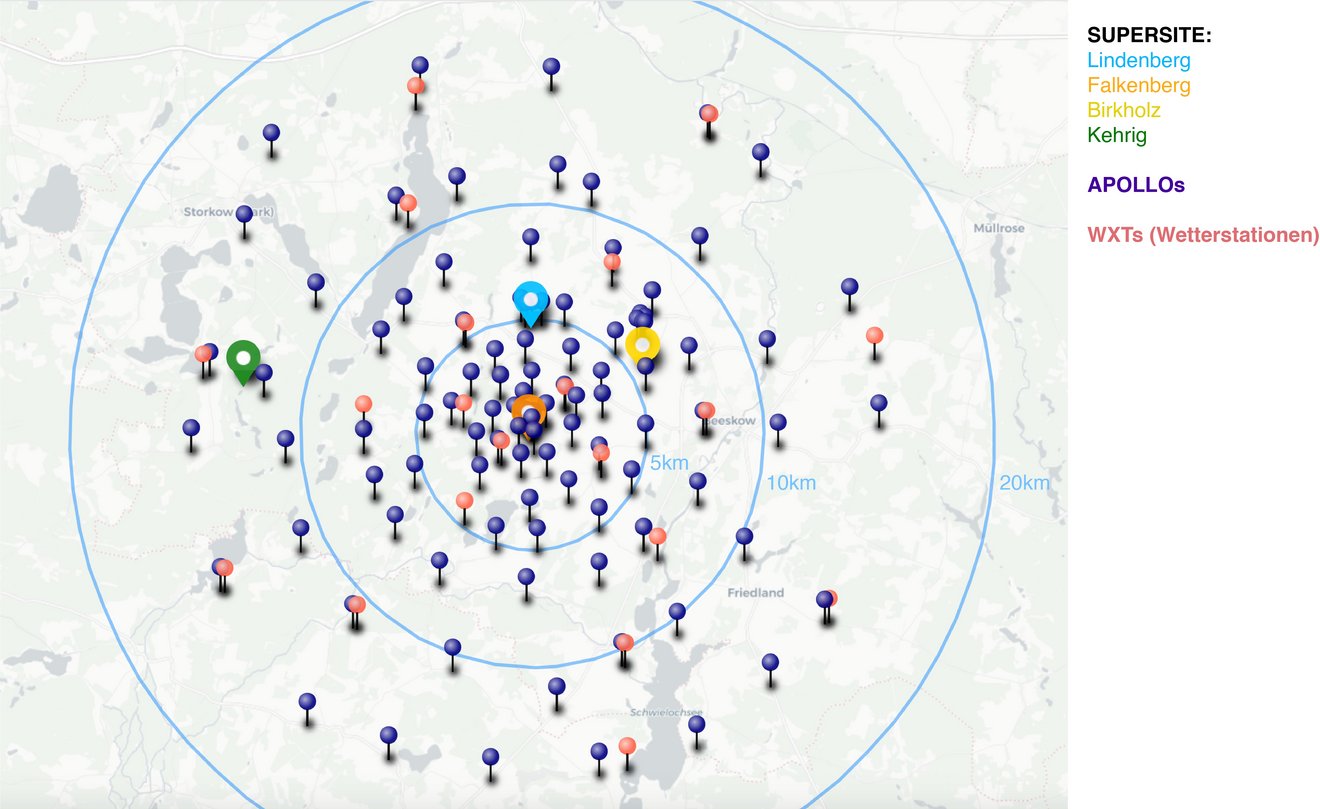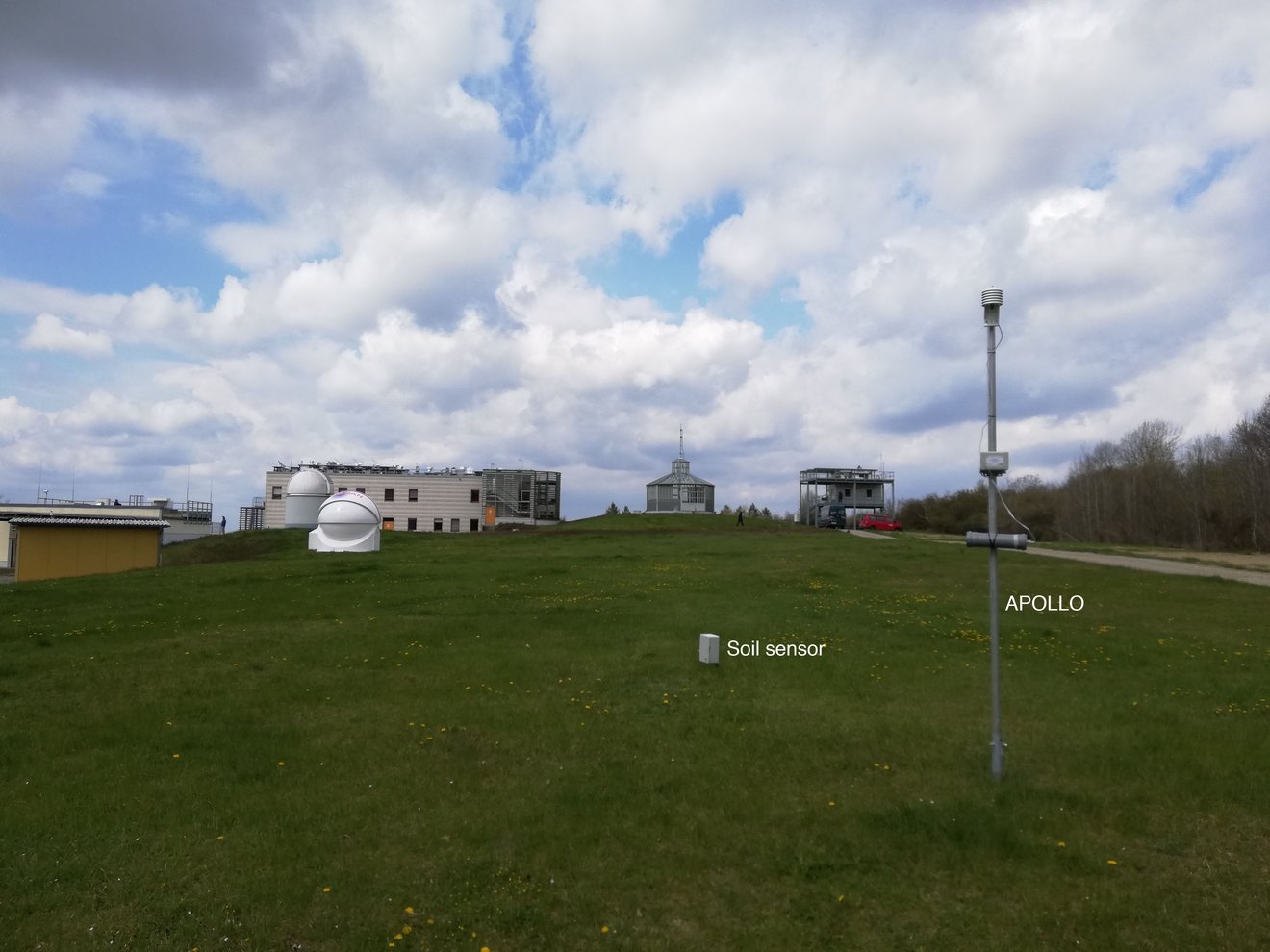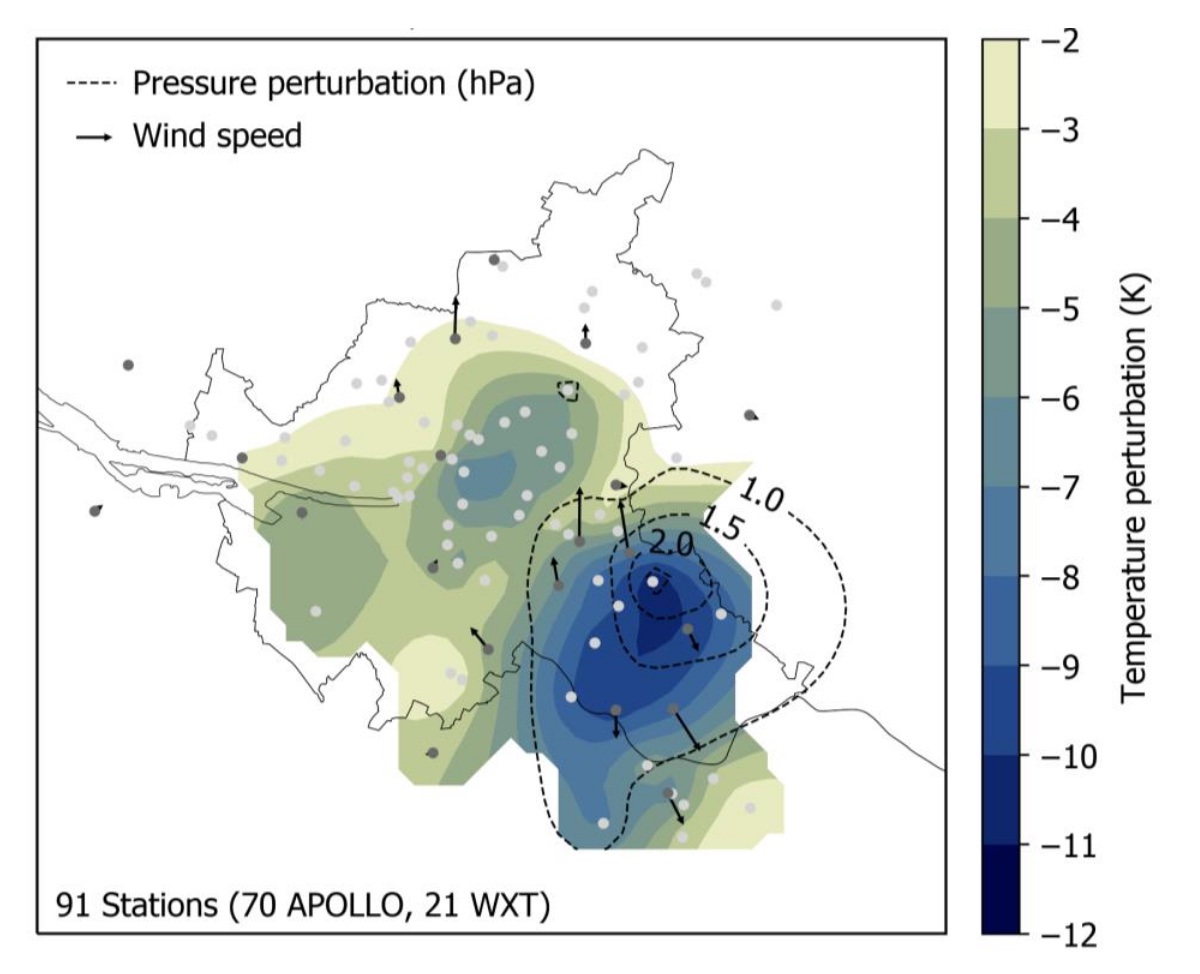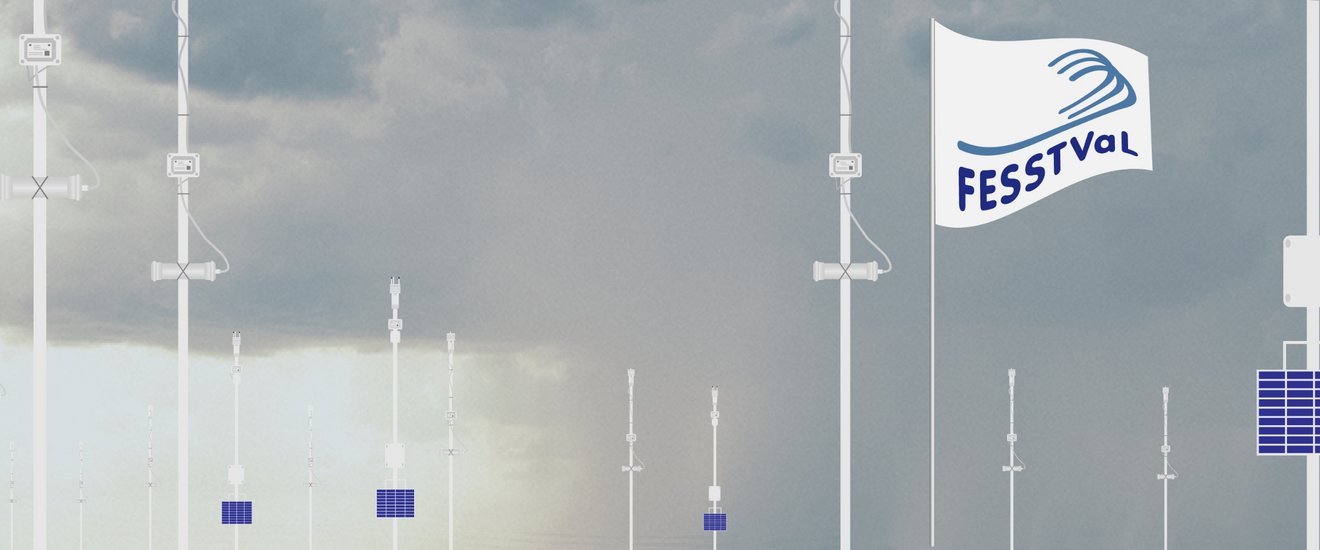FESSTVaL: a field campaign targeted to the detection of small-scale weather phenomena
FESSTVaL scientists aim to understand small-scale weather phenomena that we are all very familiar with, especially during summertime: The weather is warm and nice, and suddenly, a thunderstorm is forming. The air temperature cools considerably, the winds howl in large gusts followed by intense precipitation and then, after a few minutes, the spectacle is over. Often only a small area is affected, but serious damage can be caused locally. Equally important is how the interaction of these systems with the land surface conditions their subsequent development. The conventional ground-based measurement network, with measuring stations every 25 km, is not well suited to detect the structure and development of such spatially limited weather phenomena. FESSTVaL aims to provide new data into the life cycle of these small-scale phenomena through the construction of a dense measurement network, that it will operate in the summer months of 2021 in the Oder-Spree district of Brandenburg.
FESSTVaL stands for Field Experiment on Submesoscale Spatio-Temporal Variability in Lindenberg. The campaign was conceived of by the Hans Ertel Centre for Weather Research (HErZ). Within a 15 km radius of DWD´s Lindenberg site, FESSTVaL will closely monitor the atmosphere and land surface using its dense network of ground-based measurements, complemented by more comprehensive vertical profiling instruments at three main sites (“supersites”). The measurements will help to (i) improve the representation of small-scale atmospheric processes in numerical weather prediction models, (ii) test new measurement strategies, e.g., to capture wind gusts or to spatially adequately monitor an area, and (iii) test hypotheses about the main factors influencing the development of strong convective (summer) storms. FESSTVaL scientists are especially interested in the cold pools that from near the surface during such storms, their associated wind gusts and the development of the atmospheric boundary layer, the layer close to the surface, before and after such phenomena.

The campaign involves scientists from DWD, the Max Planck Institute for Meteorology (MPI-M) in Hamburg, the Max Planck Institute for Human Development (MPI-B) in Berlin, and from the six universities of Berlin (FU), Bonn, Frankfurt/Main, Hamburg, TU Harburg and Cologne. During the core phase of the campaign in June 2021, additional partners such as the University of Tübingen, KIT - Karlsruhe Institute of Technology, the German Aerospace Center (DLR) and the Wageningen University in the Netherlands will also participate in the campaign with their own instruments.
Scientists from MPI-M and Universität Hamburg, led by Dr. Cathy Hohenegger (MPI) and Prof. Felix Ament (Universität Hamburg) are particularly interested in ‘cold pools’. Cold pools are areas of evaporatively cooled air that descend toward the surface and then spread laterally, over an area of a few to a few tens of kilometers, underneath thunderstorms. The passage of a cold pool front is associated with a rapid decrease in air temperature, a fast increase in air pressure and a strong increase in wind speed. Since lifting at the cold pool edge often triggers new thunderstorms, cold pools are key for understanding the organization of convective precipitation and the lifecycle of thunderstorms. Despite their importance, few measurements of their internal structure are available.
The measurement campaign FESSTVaL is designed to close this knowledge gap, and to answer three research questions:
- How homogeneous is the internal structure of cold pools?
- Are the simulated characteristics of cold pools (temperature, propagation speed, size) realistically represented by high-resolution simulations?
- How are cold pool characteristics controlled and modified by external parameters such as rainfall intensity, land surface state, or structure of the atmospheric boundary layer?
The dense network of surface-based meteorological measurements of FESSTVaL forms the backbone of the measurement strategy, and consists of 80 custom designed APOLLO (“Autonomous cold POoL Logger”) stations. These were built by researchers at the University of Hamburg, and were custom designed for FESSTVaL to record temperature and air pressure every second. The APOLLO stations will be deployed within 15 km around the Meteorological Observatory Lindenberg at intervals of between hundred meters to a few kilometers, with a median distance of 1.8 km and a total covered distance in-between the stations of 350 km! This observational network is complemented by additional nineteen compact automatic weather sensors recording other meteorological variables, such as humidity and wind, as well as a high-resolution X-band rain radar. Through a cooperation with the group of Prof. Nima Shokri at TU Harburg, 100 soil sensors are also distributed in the same area to record the state of the land surface.

The ground-based remote sensing technology by DWD and the FESSTVaL partners, which will in particular include twelve lidars to measure the wind up to a few kilometers in the atmosphere and seven systems to measure vertical profiles of temperature and humidity, the use of a remotely controlled uncrewed measurement aircraft and of drones during the core phase of the campaign, as well as additional weather balloons expand the measurement network in the vertical direction. Also, the added value of a citizen-science measurement network will be investigated. Approximately 50 self-built measuring devices named MESSI (“Mein Eigenes SubSkalen-Instrument”; my own subscale instrument) will be handed out to citizens living in the area. The meteorological measurements are complemented by high-resolution model simulations with the weather forecast model ICON for the region around Lindenberg.
The measurement campaign was originally planned to take place last summer (2020), but was postponed due to the COVID-19 Pandemic. Instead, the cold pool part of the measurement campaign was relocated to Hamburg in 2020 where, thanks to the help of local residents for the maintenance of the measurement network, preparatory measurements could be performed. These measurements demonstrated that the self-built APOLLOs and the envisioned measurement strategy were indeed able to capture the spatial structure of cold pools.

Contact
Dr. Cathy Hohenegger
Max Planck Institute for Meteorology
FESSTVaL – Speaker Steering Committee
Phone: +49 (0)40 41173-302
cathy.hohenegger@mpimet.mpg.de
Dr. Sarah Wiesner
Universität Hamburg – Meteorological Institute
Project Coordination FESSTVaL
Phone: +49 (0)40 42838-5158
sarah.wiesner@uni-hamburg.de

